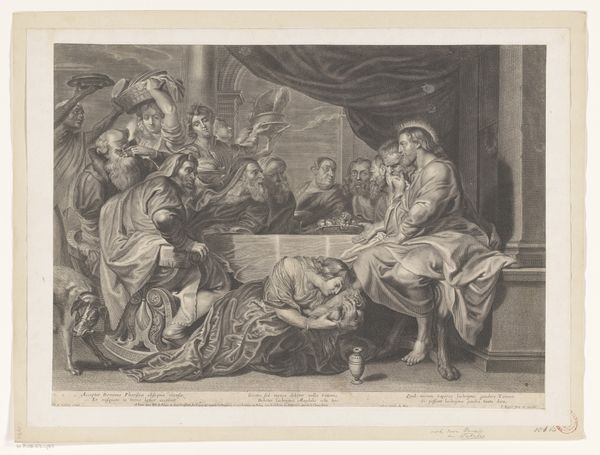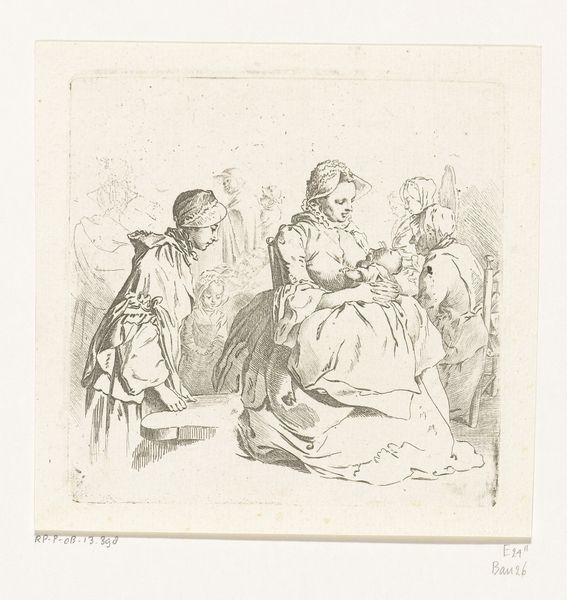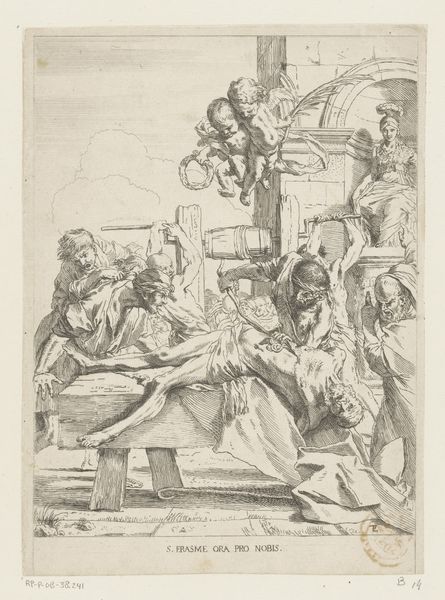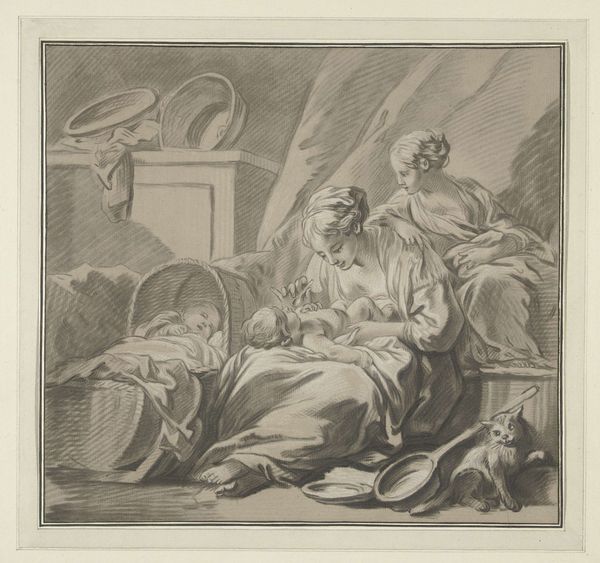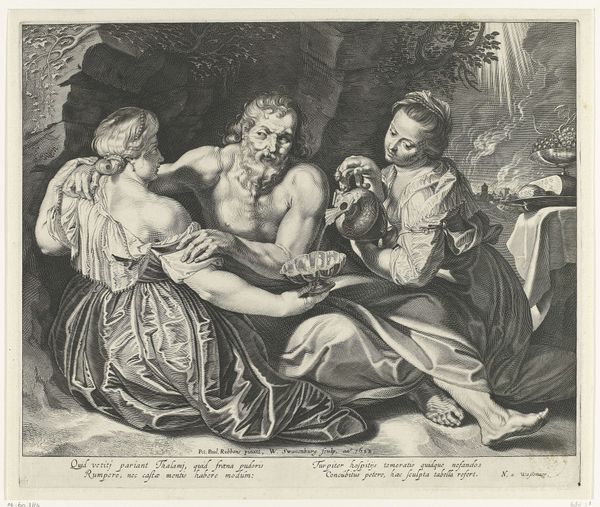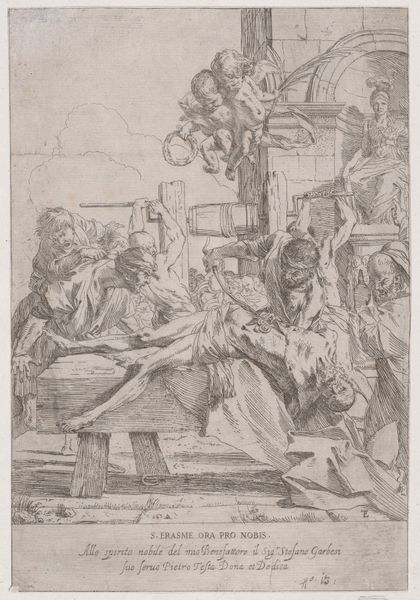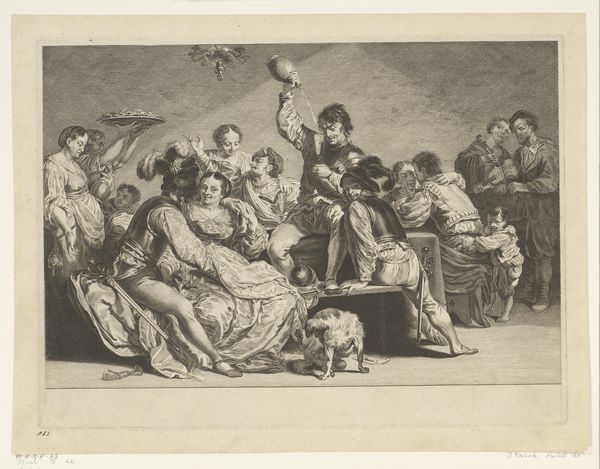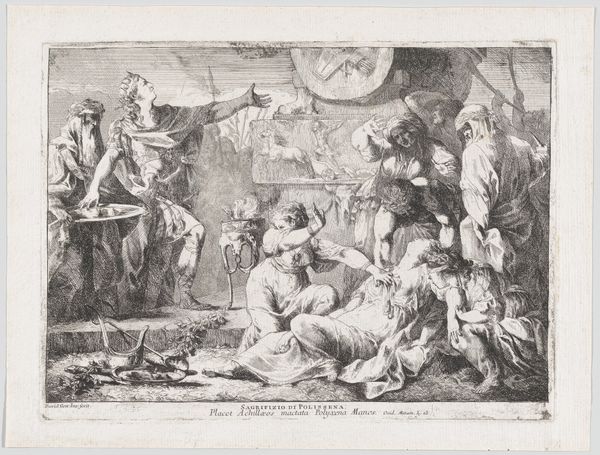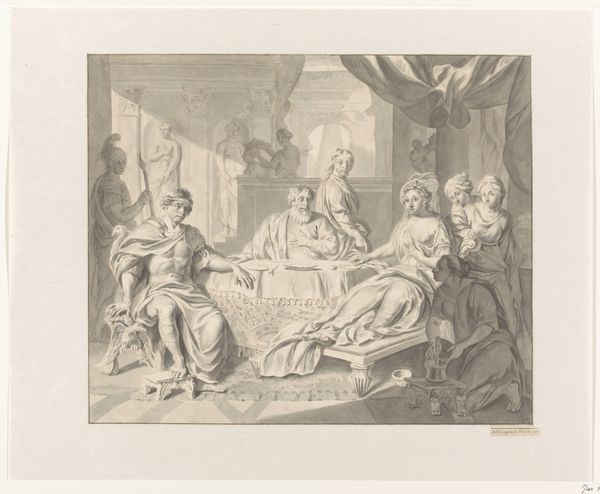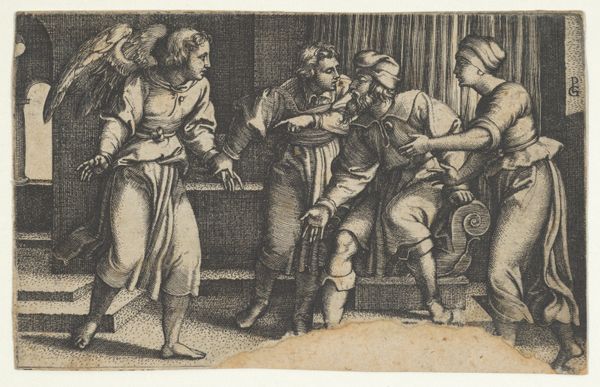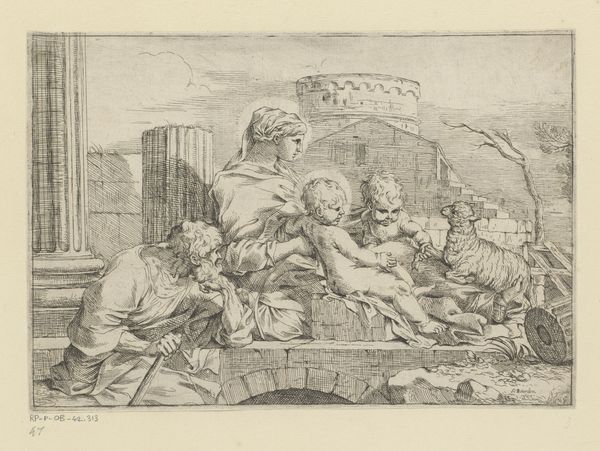
Dimensions: height 448 mm, width 606 mm
Copyright: Rijks Museum: Open Domain
Editor: This is “Musicerend gezelschap aan tafel” by Frans Lauwers, created sometime between 1864 and 1911. It's an engraving, and the detail is really impressive. It has a very candid feel, like a snapshot of daily life… How would you interpret this work? Curator: Well, viewing this through a historical lens, the print’s composition strongly suggests a staged scene rather than a candid moment. Group portraits, particularly of families engaged in activities, served very specific socio-political purposes, especially when considering the intended audience and the distribution networks for prints like these. Think about it: Who would have commissioned this? Who was meant to view it and what values was it designed to convey? Editor: You're right, there's something very deliberate about it. Everyone is carefully positioned. It's not a photograph. So what sort of values do you see reflected? The joy of music? The importance of family? Curator: Exactly! Family unity, the appreciation of art and music as markers of cultural refinement. And look at the presentation of the food and drink on the table – visual signifiers of wealth and domestic order. These prints often reinforced societal hierarchies, promoting an idealized image of the family unit. This was a carefully constructed message for public consumption. Consider the public role of imagery: How can art shape viewers’ values and behaviors? Editor: It's amazing how a seemingly simple image can have so much underlying meaning when you consider the social context. Thanks! I’ll keep that in mind. Curator: My pleasure!
Comments
No comments
Be the first to comment and join the conversation on the ultimate creative platform.

